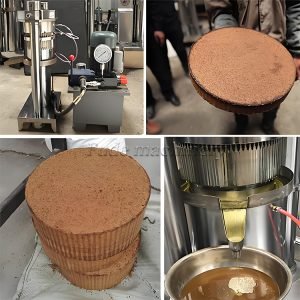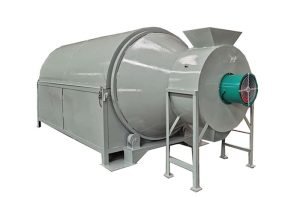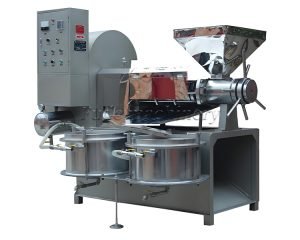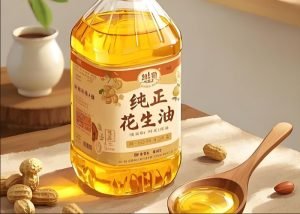Peanut oil production line
Building a peanut oil line seems complex. Do you know the steps? Let us help you understand the process simply.
Building a peanut oil production line involves several key steps. It starts with preparing the raw peanuts. Then you press the oil out. Finally, you refine the crude oil to make it ready for use.
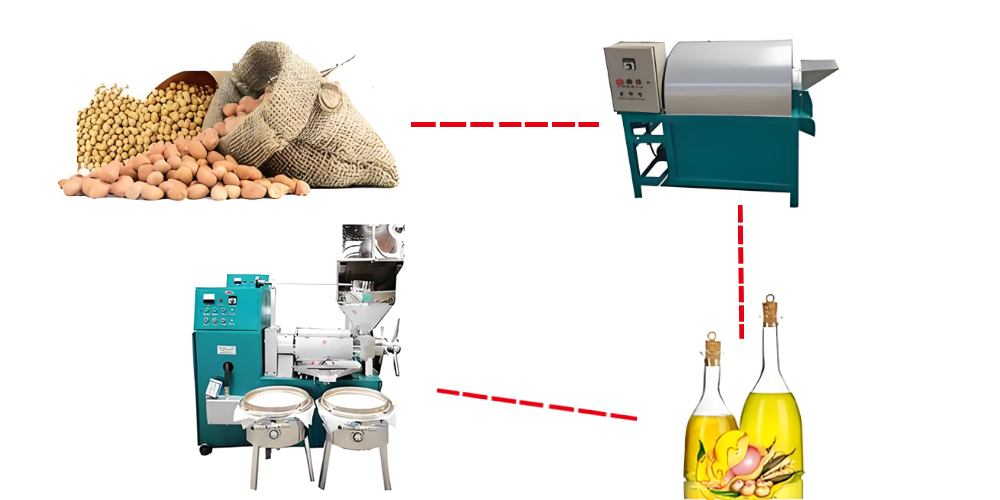
Let’s walk through each part of the process together. We will show you what each stage needs.
How Do You Prepare Raw Peanuts for Oil Extraction?
Raw peanuts have dirt and shells. This makes oil quality bad. How do you get them ready?
Preparing raw peanuts means cleaning them first. Then you remove the shells. After that, you process the kernels for pressing. This makes sure only the good part goes into the machine.
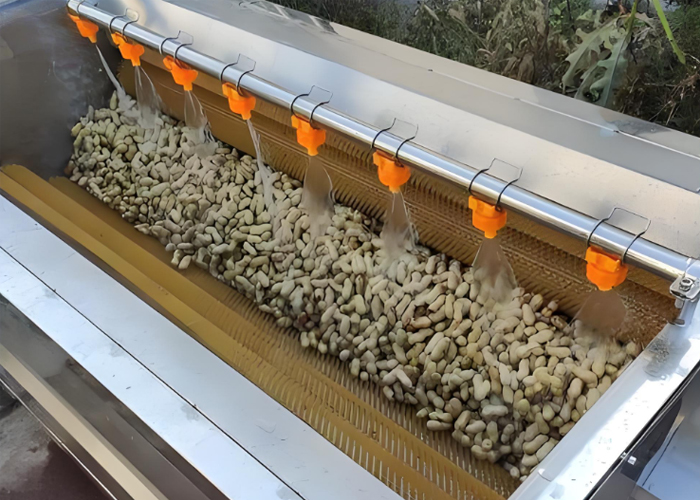
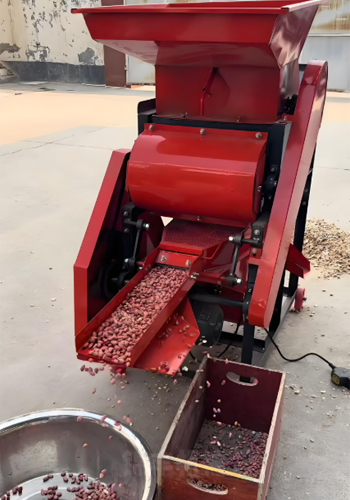
This stage is very important. It cleans the peanuts. It also gets them into the right size and condition for pressing. We have machines for each step. It helps get more oil out. It also makes the oil better quality from the start. This preparation makes the next steps easier. Good preparation cuts down waste. It also improves the final product. It saves energy later in the process.
Steps in Peanut Preparation
Here are the usual steps. We use different machines for each one.
- CleaningRaw peanuts come with dirt, stones, and other trash. You need to remove these things. Cleaning machines use screens and air. They separate the trash from the peanuts. This protects the pressing equipment. It also makes the oil cleaner.
- ShellingPeanut shells do not have much oil. You need to take them off. Shelling machines crack the shell. They separate the kernel from the shell. We use shellers that work gently. They keep the kernels whole. This is better for pressing.
- Crushing and FlakingLarge kernels are hard to press well. You crush them into smaller pieces. Then you press these pieces into thin flakes. This breaks the oil cells. It makes it easier for the oil to flow out during pressing. We have crushers and flakers that work fast.
- Cooking or SteamingSometimes, peanuts are cooked or steamed before pressing. This step uses heat and moisture. It helps to break more oil cells. It also makes the protein in the peanut change. This change helps the oil separate better. Cooking makes the oil yield higher. We have cooking machines that control temperature well.
Every step matters for the final oil quality. Good preparation is the first key to success.
What Happens in the Peanut Pressing Process?
You prepared the peanuts. Now you need to get the oil out. How does the pressing work?
The pressing process uses machines to squeeze oil from the prepared peanuts. Screw presses are common. They apply high pressure. Oil flows out and is collected. The solid part left is called cake.
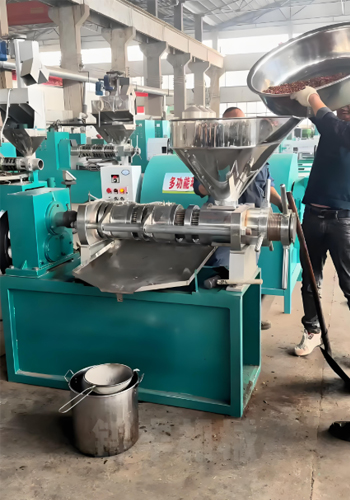
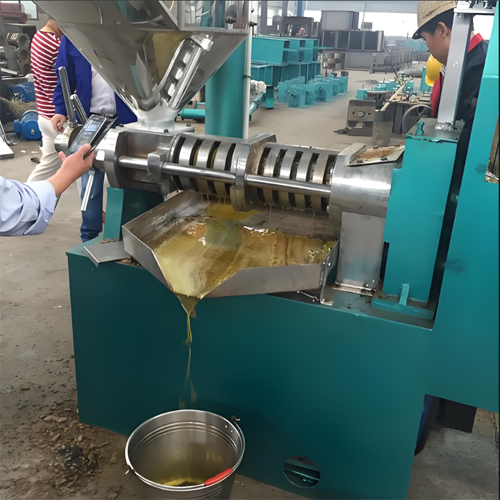
Pressing is the core part. It is where the liquid oil comes out. We offer different types of presses. The best one depends on your needs. Factors like desired oil yield and capacity matter. Our presses are designed for high efficiency. They get a lot of oil from the peanuts. They also work continuously. This means they can process large amounts quickly. Temperature control is important here. It helps protect the oil quality. Our machines often have automatic temperature control. This makes operation easier. It also ensures stable oil quality.
Details of the Pressing Stage
Let’s look closer at the pressing. We focus on screw presses.
- Screw Press OperationPrepared peanut flakes go into the press barrel. A rotating screw pushes the material forward. The space inside the barrel gets smaller. This creates very high pressure. The oil is squeezed out through small gaps. These gaps are around the screw and barrel. The solid cake comes out the end. We use special materials for the screw. This makes them strong and last long.
- Automatic Temperature ControlPressing creates heat from friction. Too much heat hurts oil quality. Our machines have systems to manage heat. Some have heating or cooling parts. They keep the pressing temperature right. This helps the oil keep its good properties. It also improves the oil yield.
- PLC Control SystemModern presses use PLC systems. This means a computer controls the machine. You can set parameters easily. You can check how the machine is working. This makes the process more stable. It also makes it safer to operate. It helps you get consistent results every time. Our machines have easy-to-use controls.
- Oil Collection and Cake DischargeThe squeezed oil flows into a collection area. From there, it goes to the next step (filtration). The solid cake comes out from the end of the press. We can adjust the thickness of the cake. This affects how much oil is left in the cake. A thin cake means more oil was extracted. The cake can be used for animal feed.
Pressing turns the solid peanuts into crude oil. It is a vital step before refining.
Why Do You Need to Refine Crude Peanut Oil?
You pressed the oil. But it looks dark and cloudy. It has a strong smell. Why is refining needed?
Refining crude peanut oil removes impurities. These include gums, free fatty acids, color, and odor. Refining makes the oil clear. It makes it taste and smell neutral. It also makes it stable for storage and cooking.
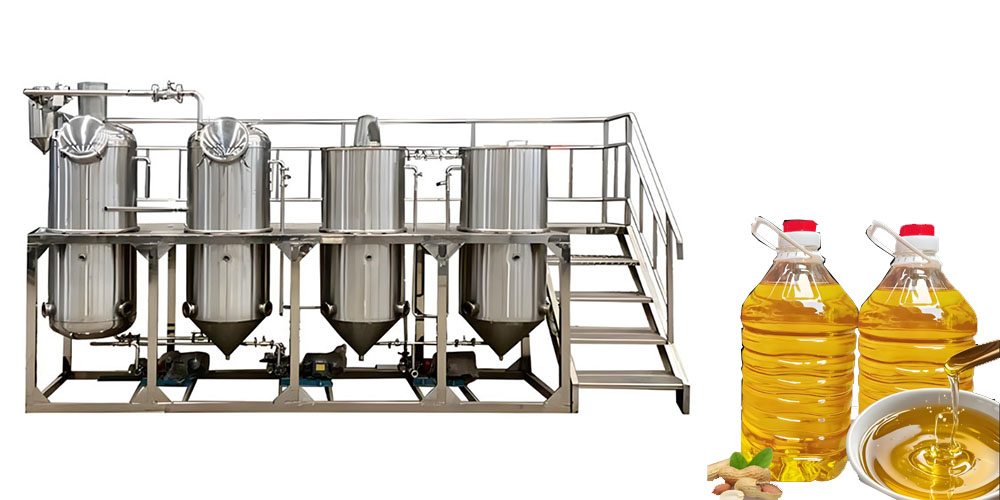
Crude oil is not finished oil. It has things in it you don’t want. Refining cleans it up. It makes the oil edible and attractive. We offer full refining lines. They can be small or very large. The process involves several tanks and steps. Each step removes a different type of impurity. Refining needs careful control of heat and chemicals. Our equipment is designed for this. We can provide batch or continuous refining systems. Batch systems work for smaller amounts. Continuous systems are for large factories. Refining is needed for high-quality cooking oil. It meets international standards.
Key Steps in Oil Refining
Here are the main stages of refining crude oil.
| Step | Impurity Removed | Method Used | Goal |
|---|---|---|---|
| Degumming | Gums, Phospholipids | Water, Acid, Enzymes | Improve stability, clarity |
| Deacidification | Free Fatty Acids (FFA) | Alkali refining, Physical | Reduce acidity, improve taste |
| Decolorization | Color pigments | Adsorbents (Clay) | Improve appearance, clarity |
| Deodorization | Odor/Flavor compounds | Steam stripping (Vacuum) | Neutralize taste and smell |
Refining takes the crude oil from the press. It turns it into finished, high-quality oil.
What Supporting Equipment is Needed for a Production Line?
You have the main machines. Are there other things you need? Yes, a full line needs support.
A complete peanut oil line needs many other machines. These help move materials. They also clean the oil further. They package the final product. They ensure smooth operation.
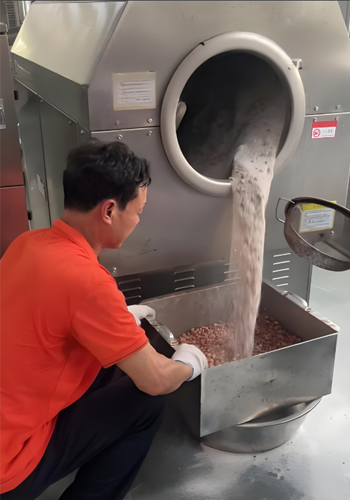
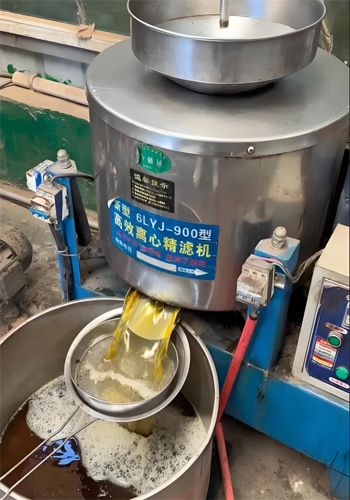
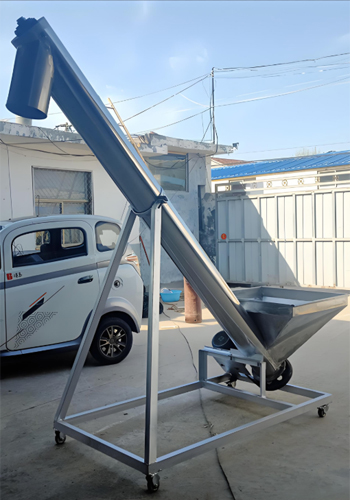
These supporting machines are important. They connect the main parts. They handle the oil and cake. They ensure the process flows well. For example, you need machines to move peanuts from cleaning to pressing. You need filters after pressing. You need pumps for the refining section. We offer all these auxiliary machines. We design the full line. This makes sure all parts work together. This complete system makes your operation efficient. It reduces manual work. It helps maintain hygiene and safety. It covers everything from raw material to finished packaged oil. We can customize the support equipment based on your line size.
Essential Supporting Machines
These machines help the main equipment do its job.
- Filtration EquipmentAfter pressing, the crude oil has solid particles. Filters remove these fines. Filter presses are common. They use pressure to push oil through filter cloths. The solids are left behind. This makes the crude oil cleaner before refining. Or it can be a final step for filtered crude oil. We have different types of filter presses.
- Heating and Cooling SystemsMany steps need specific temperatures. Heaters warm up the oil or steam. Coolers bring temperatures down. Heat exchangers transfer heat between fluids. These systems are vital for cooking, pressing (sometimes), and refining. They use boilers, heat exchangers, and cooling towers.
- Conveying SystemsYou need to move peanuts, cake, and oil between machines. Conveyors move solids (like peanuts and cake). Pumps move liquids (like oil). Screw conveyors, belt conveyors, and bucket elevators are used for solids. Gear pumps and centrifugal pumps are used for oil. These systems are automated. They reduce labor.
- Storage TanksYou need tanks to hold oil at different stages. There are tanks for crude oil, refined oil, and intermediate products. Tanks store the oil before and after processes. They also allow for settling of some impurities.
- Packaging MachinesIf you sell packaged oil, you need filling and sealing machines. These machines fill bottles or bags with finished oil. They seal them quickly and cleanly. We can include packaging solutions in the full line design.
Putting all these pieces together makes a complete and efficient production line.
Building a peanut oil line requires several steps. It starts with preparing peanuts, then pressing out the oil, and finally refining it. Zhengzhou Fude Machinery provide all the machines for these stages and the necessary support equipment.
Related recommendations
-
What is the difference between hydraulic oil press and traditional oil press
410There are significant differences between hydraulic oil presses and traditional oil presses in multiple aspects, mainly reflected in their working principles, ease of operation, pressure control, degree of automation, and footprint.
View details -
What is the purpose of a grain dryer
489Grain dryer, as a specialized agricultural machinery equipment, is mainly used to efficiently and quickly remove excess moisture from grains, in order to achieve safe storage and maintain grain quality
View details -
What is the use of oil press
347Spiral oil press is a multifunctional oil press equipment with a wide range of practical applications
View details -
How Can We Ensure High Quality and Safe Peanut Oil?
239Peanut oil, a commonly used cooking oil in daily life, is beloved by consumers for its distinctive flavor and rich nutritional value. It is abundant in unsaturated fatty acids, vitamin E, and other nutrients, making it beneficial for overall heal...
View details
 Oil Press Equipment and Oil Refining Machinery for Sale – Start Your Oil Press Business
Oil Press Equipment and Oil Refining Machinery for Sale – Start Your Oil Press Business
